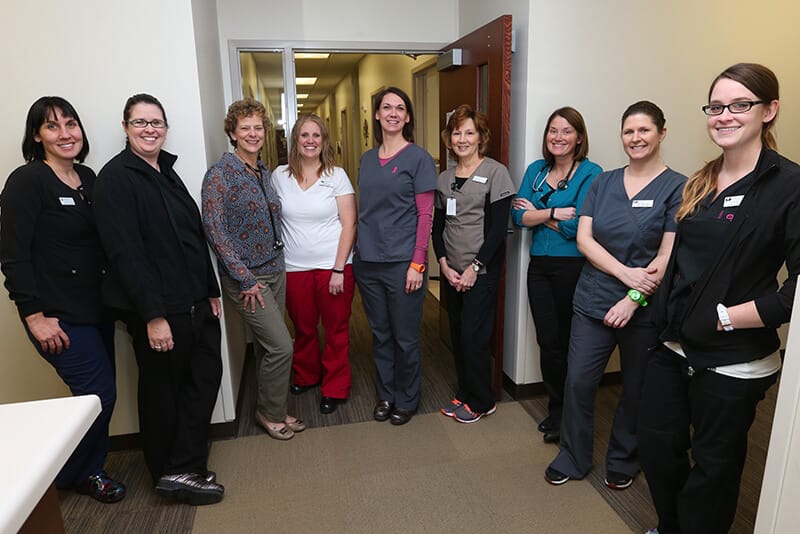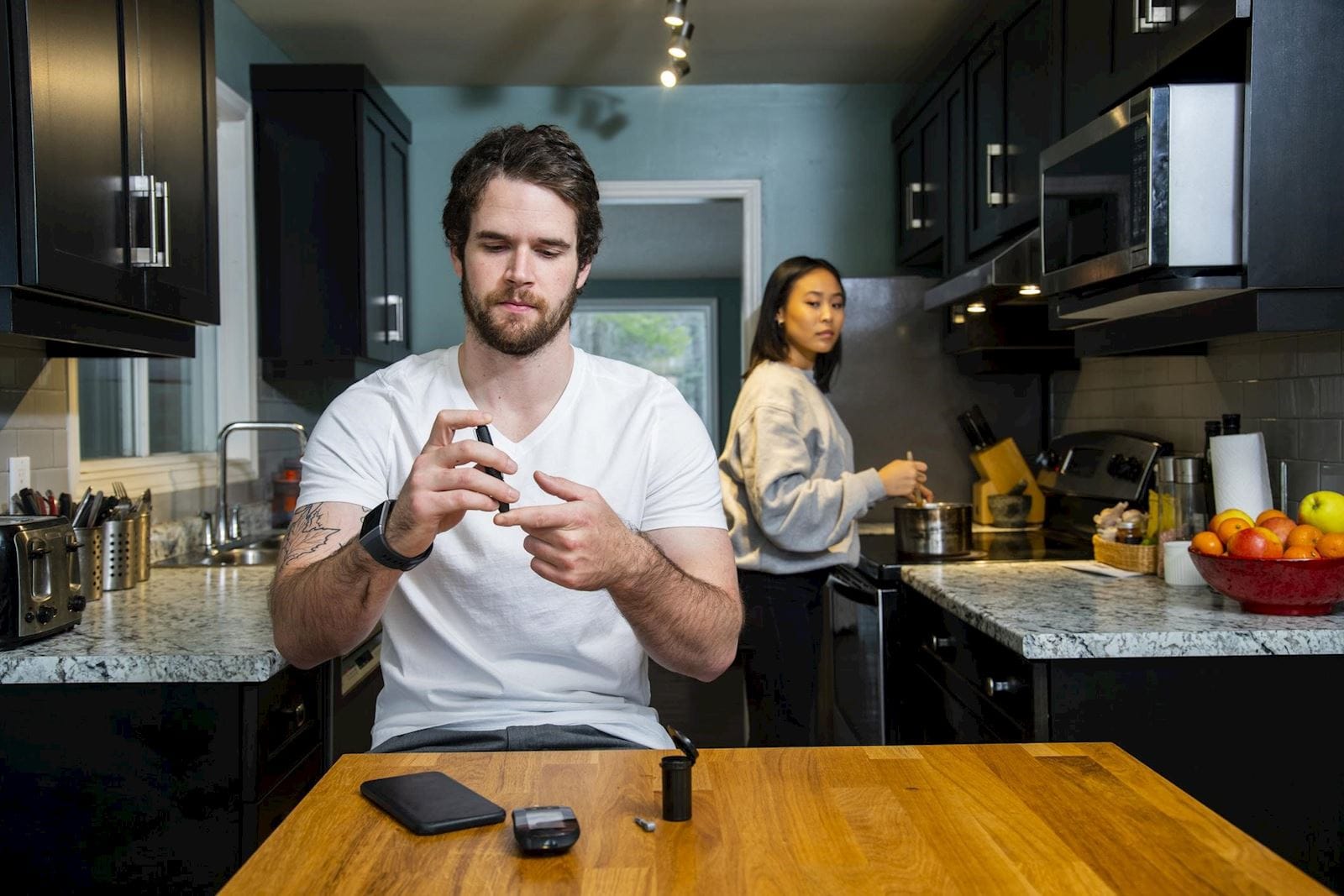Learn what puts you at risk for having a stroke and some preventative measures you can take to reduce your chances of having one.
Posted
by Featured Provider Sarah Tallman on Thursday, June 25, 2020

You may be familiar with the damaging effects of stroke — droopy facial muscles, muscular spasms, difficulty walking, speech and language problems and challenges eating and swallowing. A stroke can also impact memory, cognitive abilities, vision, bladder control and emotions.
And a stroke can affect more than just the person who has it. The event often takes its toll on family members and friends in terms of time, emotional wear and tear and financial stress. In Iowa, the cost of stroke care totals more than $39,000 per person, according to the Iowa Department of Public Health (IDPH). That doesn’t even include the cost of treatment or lost wages due to missed work.
Fortunately, we can all take steps to avoid the health and financial tolls of a stroke. As much as 80 percent of all strokes are preventable. All it takes is knowing your risk factors and how to manage them.
What are the risk factors of stroke?
Strokes can happen to anyone, and often happen without warning. But certain traits, habits and medical conditions increase the risk of having a full-on stroke or a mini stroke. Mini strokes are transient ischemic attacks (TIA) that are short-lived versions of strokes. While they don’t result in brain damage, they are a major predictor of future stroke.
Many risk factors for a stroke or TIA are out of your control:
- Age – Beginning around age 50, your stroke risk increases as you age.
- Gender – Before age 75, men are at greater risk than women. After age 75, women are at greater risk.
- Race and ethnicity – Risk is higher if you are an African American, Alaska Native or American Indian adult than if you are Caucasian, Hispanic or Asian American.
- Personal or family history – Stroke risk increases about 30 percent if you have a parent who had a stroke.
Stroke risk also increases when certain genetic factors or lifestyle behaviors are present. However, these generally are manageable either through lifestyle changes or with medication.
The stroke risk factors you can control include:
“I cannot emphasize enough how important it is for people to quit smoking and improve their diet,” Dr. Fry adds. “If you smoke, you are twice as likely to have a stroke as a nonsmoker. A poor diet — one that's high in saturated fat, salt and alcohol, and lacks adequate fruit, vegetables and whole grains — is also a major risk factor.”

Know Your Risk of Stroke
A stroke risk assessment with your primary care physician can calculate your personal risk — so you can take preventative steps.
Schedule an Assessment
What causes a stroke?
Your brain is short on oxygen. The flow of oxygen-rich blood to the brain gets interrupted — usually by a blood clot or a piece of plaque in the brain or neck. The lack of oxygen quickly causes brain cells that control parts of the body to begin to die. Permanent brain damage, long-term physical disability and even death can occur within minutes.
Although a shut-off of blood and oxygen to the brain is the direct cause, there are four primary medical conditions that are particularly predictive of stroke, Dr. Massop says. These conditions raise your stroke risk to alarming levels. If you have one of them, you need to take steps to manage it in order to significantly lessen the odds that you'll have a stroke.

1. High Blood Pressure
Uncontrolled high blood pressure increases your stroke risk by four to six times.
“High blood pressure, or hypertension, has earned the name 'the silent killer' because most people can't feel when their blood pressure is elevated. But this doesn't mean it isn't causing you harm,” says Sarah Tallman, DO, an Internal Medicine physician at The Iowa Clinic’s West Des Moines Campus.
“Over time, consistently elevated blood pressure causes premature aging of blood vessels, also called atherosclerosis, and hardening of the large arteries, which can lead to stroke,” she says.
If you don't know your blood pressure, you can get it checked at an annual exam or another appointment. In between doctor's visits, monitor your blood pressure using a self-serve blood pressure station that you can pick up at your local pharmacy. If your blood pressure stays at or above 130/80 mmHg over time, you have hypertension and need to discuss it with your physician right away.
“If your doctor recommends you take blood pressure medication, make sure you are diligent in taking these medications consistently and as prescribed,” Tallman adds.
2. Atrial Fibrillation (AFib)
“Although heart disease and a number of other heart conditions can raise your risk of stroke, atrial fibrillation is the biggest concern we have these days,” says David Lemon, MD, a cardiologist at The Iowa Clinic in West Des Moines.
AFib causes a fast, irregular heart rhythm that can lead to the formation of blood clots. These can travel from the heart to the neck or brain and cause a stroke.
“Atrial fibrillation is now present in the majority of stroke cases that are caused by heart disease. A recent report indicated that 10 percent of people over the age of 80 have AFib — often without knowing it,” says Dr. Lemon. “This is one reason having an annual exam is a really good idea.”
When AFib occurs before the age of 70, it’s likely from high blood pressure, too much alcohol or sleep apnea. Dr. Lemon says “These are all very treatable, so we rule those out before moving to other forms of AFib treatment, which can be invasive and expensive.”
Once a doctor rules out the conditions that cause AFib, the irregular heartbeat is treatable in other ways. Both primary treatments for atrial fibrillation have drawbacks, which is why prevention is so important.
AFib Medications
Traditionally, doctors have prescribed warfarin (Coumadin®) to prevent blood clots from forming. Once on the drug, you’re closely monitored by your physician until you achieve the optimum dosage. Then you are regularly checked after that.
“There are several new medications that also work well but have some drawbacks. These drugs don't require frequent doctor visits to monitor heart rhythm, as warfarin does, but there is no antidote if you have a bleeding incident while on the drug. With warfarin, we have an antidote,” Lemon says.
Atrial Fibrillation Procedures
Sometimes medicine alone isn’t enough to regulate an irregular heart rhythm. There are a number of minimally invasive and surgical procedures that a cardiologist may use to fix your heart, depending on your health and stroke risk factors. For example, the WATCHMAN Implant, an innovative procedure performed at The Structural Heart Clinic, is a minimally invasive procedure that eliminates the need to be on blood thinners long term.
3. Carotid Artery Disease
The internal and external carotid arteries on each side of the neck carry oxygen-rich blood to the brain, face, scalp and neck. When a complex substance known as atherosclerotic plaque builds up in the arteries, they narrow and blood clots form. Pieces of the clot or plaque can break off, sharply increasing your risk of stroke.
“Beginning at age 50, your primary care or vascular physician should routinely listen to your carotid arteries with a stethoscope,” Dr. Massop says. “If they hear a whooshing sound, it may indicate reduced blood flow caused by narrowing of those arteries. At that point, an additional, limited ultrasound screening test is needed.”
An ultrasound can detect carotid artery disease. If an ultrasound uncovers the narrowing of a carotid artery, one of two treatments may be necessary to restore blood flow to the brain.
Surgical Carotid Endarterectomy
The “gold standard” for preventing carotid embolic stroke. Doctors recommend this procedure when your carotid arteries are more than 50 percent blocked with symptoms or more than 80 percent blocked without symptoms. Both the surgery and recovery are fairly quick. You’re typically in the hospital just 24 hours and go home with an easy recovery.
Carotid Artery Angioplasty and Stenting
This treatment doesn't even require surgical incisions and is usually performed using a local anesthetic. It’s a balloon widening of the artery where a vascular surgeon threads a thin tube with a deflated balloon on its end through a blood vessel in your neck. The balloon is then inflated to widen the narrowed artery. Your surgeon inserts a small mesh tube called a stent to keep your artery open and your blood flowing.

4. Diabetes
“Although diabetes is primarily a blood sugar issue, it is closely tied to vascular disease,” says Dr. Tallman. “When blood sugars are consistently elevated, this is incredibly damaging to blood vessels throughout your body and causes plaque to develop within blood vessels. This puts you at risk of heart attack and stroke at an early age.”
Diabetes can double, even quadruple, your risk of stroke. To lower your risk, you must maintain healthy blood sugar, blood pressure, and cholesterol levels by rigorously following your physician's recommendations for diet and exercise and consistently take all your prescribed medications.
“The great news is we have a lot of tools at our disposal to treat diabetes. Your physician can help you understand which treatments are right for you,” Tallman says.
“You will never go wrong by exercising regularly, staying free of tobacco products and keeping alcohol use in moderation,” she adds. “Your lifestyle choices can play a major role in reducing your risk — this means you have a lot of power to prevent strokes.”
How can I reduce my risk for stroke?
The first step to reducing your risk of stroke is to figure out what it is. There are so many factors that go into your risk profile that many things may go overlooked. You can undergo a stroke risk assessment with your primary care provider to see what your chances are, identify the contributing factors and outline a plan for prevention.
Many of the stroke prevention methods have been outlined above. The earlier you make these lifestyle changes, the better.
“There are several things you can do early on to reduce your risk. These include not smoking, maintaining a healthy diet and weight, controlling your blood pressure, exercising regularly and avoiding excessive use of alcohol,” says Dr. Massop.
“If you know you are at risk for stroke due to any of the above factors, establish a relationship with a primary care provider who can evaluate and treat your risks.”
Early diagnosis is key for any vascular issue. Fill out our vein assessment form to start a conversation with one of our specialists and take the first step toward better health.
Meet This Featured Provider

Learn More About:
Internal Medicine,
Primary Care,
Women's Center,
Men's Center
Dr. Sarah Tallman is an Internist at The Iowa Clinic‘s West Des Moines Campus. She received her medical degree from Des Moines University and completed her residency at the Medical College of Wisconsin. She is Board Certified in Internal Medicine and a member of the American College of Phys... Read More
Other Cardiology
Tags
- cardiology
- vascular surgery